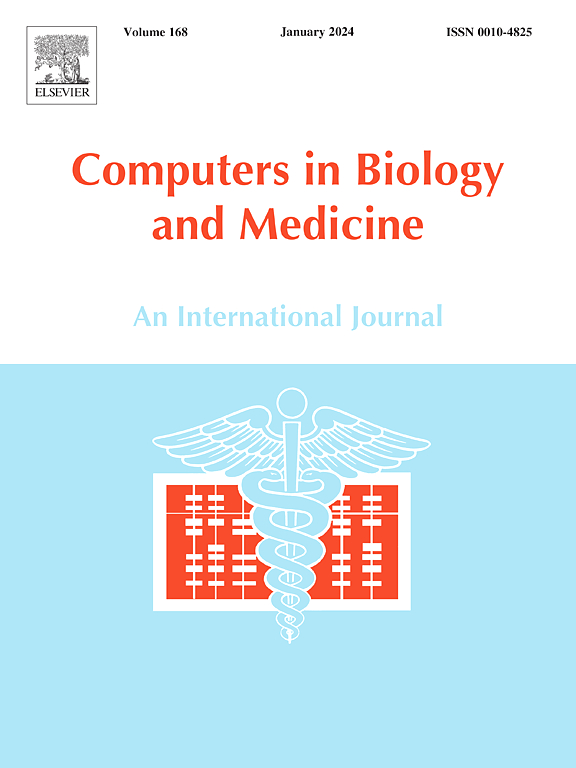COPS4是一种新的预后生物标志物和潜在的治疗靶点,参与多种癌症的免疫微环境调节
IF 7
2区 医学
Q1 BIOLOGY
引用次数: 0
摘要
CHOL、HNSC、ESCA和LIHC是世界上最具侵袭性和致命性的恶性肿瘤。尽管有临床负担,这些癌症仍然缺乏可靠的早期检测、预后和治疗靶向的生物标志物。COP9信号体(cop)是泛素蛋白酶体途径的关键调节因子,已被证明在各种癌症类型中异常表达,并被认为有助于肿瘤的发生和进展。在其亚基中,COPS4在维持复合体的功能完整性方面起着至关重要的作用。然而,其在癌症中的预后意义和临床病理相关性仍然知之甚少。本研究采用了基于tcga衍生数据集的综合生物信息学框架,结合了包括UALCAN、GEPIA、MEXPRESS、OncoDB、UCSC Xena、ENCORI、TIMER、GeneMANIA、TNMplot和TISIDB在内的分析平台。通过这种策略,研究描绘了COPS4在CHOL、HNSC、ESCA和LIHC中的转录格局、基因组畸变、免疫学关联和推测的功能作用。通过虚拟筛选和分子动力学模拟来探索其药物潜力。COPS4在肿瘤组织中的表达显著上调,并与病理分期、组织学分级、淋巴结受损伤和转移状态等关键临床参数密切相关。免疫组化分析进一步证实了肿瘤标本与邻近非肿瘤组织相比蛋白水平升高。基因组改变很常见,主要是LIHC突变,CHOL扩增,HNSC和ESCA扩增和缺失。COPS4表达与癌基因亚群呈正相关,与抑癌基因呈负相关。值得注意的是,NUP54和HELQ成为一致的共同靶点。免疫分析显示,COPS4与浸润性免疫细胞(包括CD8+和CD4+ T细胞、B细胞、巨噬细胞、中性粒细胞和树突状细胞)呈正相关。COPS4的体细胞拷贝数变化也影响免疫细胞浸润和患者生存结果。启动子低甲基化和基因扩增被确定为驱动其过度表达的机制。最后,虚拟筛选和分子动力学模拟确定了fda批准的药物与COPS4相互作用,强调了其致癌作用和治疗潜力。本文章由计算机程序翻译,如有差异,请以英文原文为准。
COPS4 is a novel prognostic biomarker and potential therapeutic target involved in regulation of immune microenvironment in numerous cancers
CHOL, HNSC, ESCA, and LIHC are among the most aggressive and fatal malignancies worldwide. Despite their clinical burden, these cancers still lack dependable biomarkers for early detection, prognosis, and therapeutic targeting. The COP9 signalosome (COPS), a key regulator of the ubiquitin proteasome pathway, has been shown to be aberrantly expressed in various cancer types and is thought to contribute to tumor development and progression. Among its subunits, COPS4 plays an essential role in maintaining the functional integrity of the complex. However, its prognostic significance and clinicopathological relevance in cancer remain poorly understood.
This study adopted a comprehensive, integrative bioinformatics framework grounded in TCGA-derived datasets, incorporating analytical platforms encompassing UALCAN, GEPIA, MEXPRESS, OncoDB, UCSC Xena, ENCORI, TIMER, GeneMANIA, TNMplot, and TISIDB. Through this strategy, the investigation delineated the transcriptional landscape, genomic aberrations, immunological associations, and putative functional roles of COPS4 across CHOL, HNSC, ESCA, and LIHC. Virtual screening and molecular dynamics simulations were performed to explore its druggable potential. COPS4 expression was significantly upregulated in tumor tissues and exhibited strong associations with key clinical parameters, including pathological stage, histological grade, nodal involvement, and metastatic status. IHC analysis further validated elevated protein levels in tumor specimens compared to adjacent non-neoplastic tissues. Genomic alterations were frequent, with predominant mutations in LIHC, amplifications in CHOL, and both amplifications and deletions in HNSC and ESCA. COPS4 expression showed positive associations with subset of oncogenes and inverse correlations with tumor suppressors. Notably, NUP54 and HELQ emerged as consistent co-targets. Immune analysis revealed strong positive correlations between COPS4 and infiltrating immune cells, including CD8+ and CD4+ T cells, B cells, macrophages, neutrophils, and dendritic cells. Somatic copy number variations of COPS4 also influenced immune cell infiltration and patient survival outcomes. Promoter hypomethylation and gene amplification were identified as mechanisms driving its overexpression. Finally, virtual screening and molecular dynamics simulations identified FDA-approved drugs interacting with COPS4, emphasizing its oncogenic role and therapeutic potential.
求助全文
通过发布文献求助,成功后即可免费获取论文全文。
去求助
来源期刊

Computers in biology and medicine
工程技术-工程:生物医学
CiteScore
11.70
自引率
10.40%
发文量
1086
审稿时长
74 days
期刊介绍:
Computers in Biology and Medicine is an international forum for sharing groundbreaking advancements in the use of computers in bioscience and medicine. This journal serves as a medium for communicating essential research, instruction, ideas, and information regarding the rapidly evolving field of computer applications in these domains. By encouraging the exchange of knowledge, we aim to facilitate progress and innovation in the utilization of computers in biology and medicine.
 求助内容:
求助内容: 应助结果提醒方式:
应助结果提醒方式:


